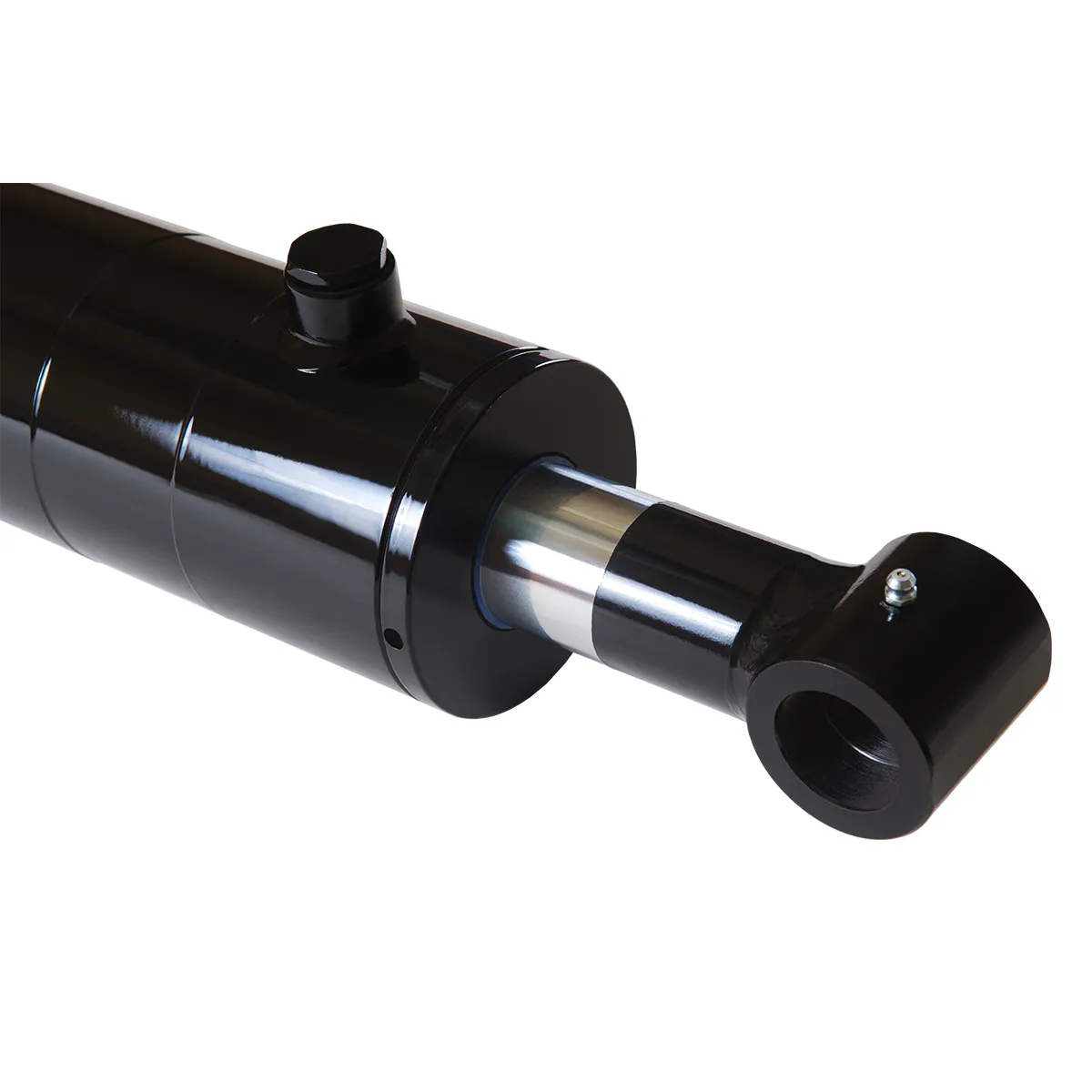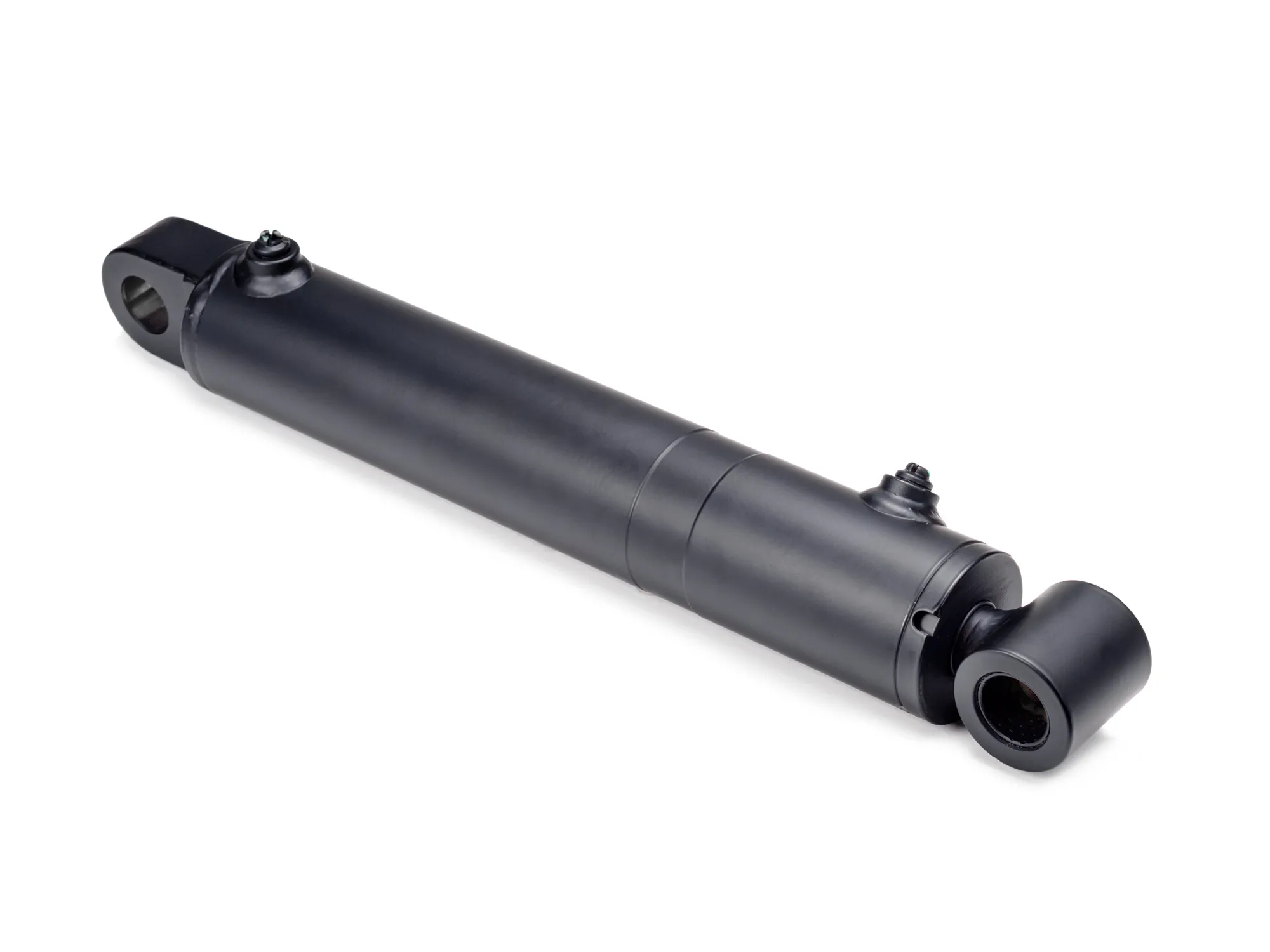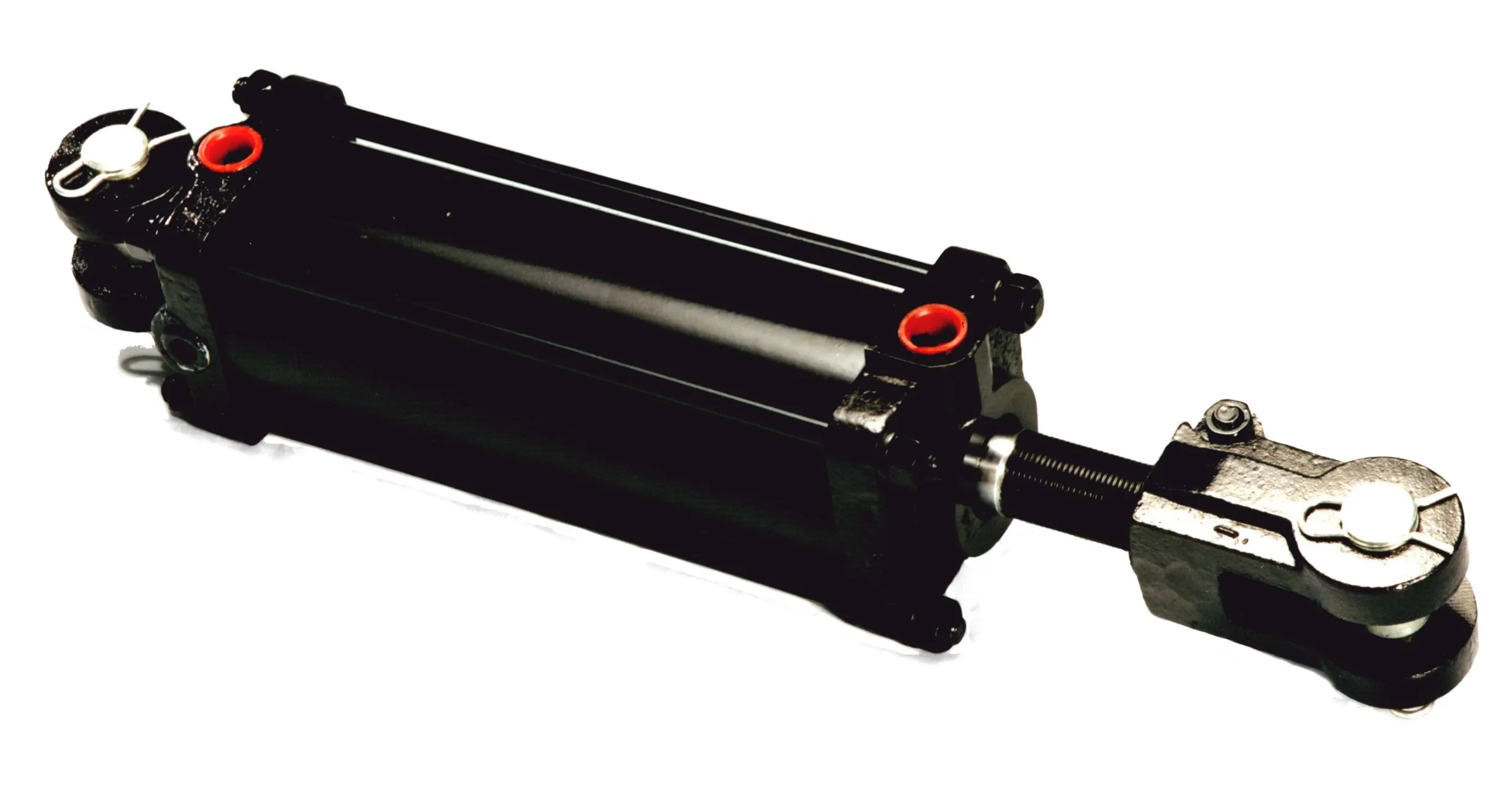The Ultimate Guide to Piston Rod Welded Hydraulic Cylinder Design
Introduction to Piston Rod Welded Hydraulic Cylinder
When it comes to hydraulic systems, the piston rod welded hydraulic cylinder plays a crucial role in providing efficient force transfer and smooth motion control. These cylinders are designed to withstand high pressure and heavy loads, making them ideal for a wide range of industrial applications.
Principle of Piston Rod Welded Hydraulic Cylinder
The piston rod welded hydraulic cylinder consists of a piston rod that moves back and forth within a cylinder to create fluid pressure and perform mechanical work. These cylinders are essential components in hydraulic systems, providing the necessary force to drive machinery and equipment.
Role and Application in Hydraulic System
These cylinders are commonly used in construction, manufacturing, agriculture, transportation, mining, aerospace, and aviation industries to provide power and control in various applications. Their high strength materials and welded design ensure durability and reliability in harsh working environments.
Design and Construction Characteristics

Manufacturing Material
The piston rod welded hydraulic cylinder is typically made from high-strength materials such as steel or alloy, ensuring its ability to withstand high pressures and heavy loads. This material selection enhances the durability and performance of the cylinder.

Design Features
These cylinders are designed with welded technology to reduce the risk of leakage and improve sealing performance. This design also simplifies maintenance and provides customization options to meet specific application requirements.
Welded Technology
The welded technology used in the construction of these cylinders ensures a strong and durable bond between components, reducing the number of parts and improving overall efficiency. This technology contributes to the compact design and efficient force transfer of the cylinder.
Working Principle
Liquid Transfer Force
The piston rod welded hydraulic cylinder transfers force through the movement of hydraulic fluid, creating pressure to drive the piston rod and perform mechanical work. This force transfer is essential for the operation of various industrial machinery and equipment.
Sealing System
The sealing system of the cylinder prevents hydraulic fluid leakage and maintains system efficiency. The welded design reduces the risk of leaks, ensuring a reliable and consistent performance in hydraulic applications.
Pressure Release
The cylinder releases pressure through controlled movements of the piston rod, allowing for precise motion control and energy efficiency. This pressure release mechanism is crucial for maintaining system stability and performance.
Types and Configurations
Standard Hydraulic Cylinder
The standard piston rod welded hydraulic cylinder is the most common type, used in a wide range of applications that require efficient force transfer and durability. These cylinders are versatile and reliable, making them suitable for various industrial needs.
Telescopic Hydraulic Cylinder
Telescopic cylinders consist of multiple stages that extend and retract to provide different stroke lengths and force capabilities. These cylinders are commonly used in applications that require variable extension and compact design.
Non-Standard Hydraulic Cylinder
Non-standard cylinders are customized to meet specific application requirements, such as different lengths, diameters, and pressure ratings. These cylinders offer flexible solutions for unique industrial needs.
Advantages of Piston Rod Welded Hydraulic Cylinder
High Strength and Durability
The use of high-strength materials and welded technology ensures the cylinder can withstand high pressure and heavy loads, providing long-term stability in harsh environments.
Excellent Sealing Performance

The welded design reduces the risk of leakage, improving the efficiency and reliability of the hydraulic system. This enhanced sealing performance ensures consistent operation and minimal maintenance requirements.
Customization Options
The cylinder can be customized to meet specific application needs, offering flexibility in length, diameter, and pressure requirements. This customization allows for tailored solutions in various industrial settings.
Simplified Maintenance
The welded structure reduces the number of components, making maintenance and overhaul work simpler and more cost-effective. This simplification helps reduce downtime and ensures the longevity of the cylinder.
Efficient Force Transfer
The piston rod welded hydraulic cylinder provides efficient force transfer, enabling smooth motion control in a wide range of industrial applications. This efficiency improves overall system performance and productivity.
Performance Characteristics
High Pressure Bearing Capacity
These cylinders can withstand working pressures of up to hundreds of bars, making them suitable for heavy loads and high-strength applications. The high pressure bearing capacity ensures reliable performance in demanding environments.
Excellent Force Transfer Efficiency
The design of the cylinder enhances force transfer efficiency, ensuring smooth operation and reduced energy loss. This efficiency improves overall system performance and productivity, making it a preferred choice for industrial applications.
Good Sealing
The welded structure reduces the risk of leakage, ensuring the sealing of hydraulic oil and enhancing system reliability. This good sealing capability minimizes maintenance requirements and ensures consistent performance over time.
Wear Resistance and Corrosion Resistance
With high wear-resistant materials and surface treatment technology, these cylinders offer excellent wear and corrosion resistance. They can withstand harsh environments and provide long-lasting performance in challenging conditions.
Smaller Volume and Weight
Compared to traditional cylinders, the welded design of these cylinders makes them more compact and lightweight, ideal for space-constrained applications. The smaller volume and weight improve installation flexibility and efficiency in industrial settings.
Industries Application
Construction and Construction
Used in heavy machinery such as cranes, excavators, and bulldozers to provide powerful push and pull forces for earthmoving operations and material handling.
Manufacturing
Utilized in automated production lines and robotic systems to precisely control movement and improve production efficiency and flexibility.
Agricultural Machinery
Applied in agricultural equipment such as tractors and combine harvesters to assist in tillage, sowing, and harvesting operations.
Transportation
Installed in trucks, buses, and railway vehicles for brake and suspension systems to enhance safety and comfort during transportation.
Mining
Used in mining equipment like loaders and conveyors to provide power for material handling and processing in mining operations.
Aerospace and Aviation
Incorporated into aircraft landing gear and control systems to ensure reliable performance under extreme conditions in the aerospace industry.
Design Considerations and Selection Criteria
Bearing Capacity
When selecting a piston rod welded hydraulic cylinder, it is essential to consider its bearing capacity to ensure it can withstand the required pressure and loads in the application.
Sealing and Durability
The sealing system and overall durability of the cylinder are crucial factors to prevent leakage and ensure long-term performance reliability in hydraulic systems.
Safety and Maintainability
Ensuring the safety of the hydraulic system and ease of maintenance are key considerations when choosing a piston rod welded hydraulic cylinder for industrial applications.
Sealing and Lubrication
Various seals, including piston seals and rod seals made from wear-resistant materials like polyurethane and nitrile rubber, are used to prevent leakage. Regular lubrication with hydraulic oil is essential to maintain smooth operation and minimize wear.
Regular Inspection and Maintenance
Implementing regular inspection and preventive maintenance measures, such as checking for wear and leaks, ensures the optimal performance and longevity of piston rod welded hydraulic cylinders.
Installation Guide
Proper installation of piston rod welded hydraulic cylinders is crucial for their performance and safety. Follow the manufacturer’s guidelines and ensure correct alignment and connection to prevent operational issues.
Maintenance Tasks
Regular inspection, proper lubrication, seal replacement, and calibration checks are essential maintenance tasks for piston rod welded hydraulic cylinders. Following these tasks can prolong the service life and efficiency of the cylinders.
Safety Considerations
Adhering to safety measures and environmental factors when using piston rod welded hydraulic cylinders is critical to prevent accidents and ensure the longevity of the equipment. Proper training and maintenance practices are essential for safe operation.
Fault Diagnosis and Common Problems
Diagnosing common issues with piston rod welded hydraulic cylinders, such as leaks or malfunctions, requires a systematic approach to identify the root cause and implement effective solutions to restore the system’s performance.
FAQs
How does the welded process enhance the durability of these cylinders?
The welded construction of piston rod hydraulic cylinders ensures a strong bond between components, reducing the risk of leakage and improving overall durability and performance in industrial applications.
In which industries are piston rod welded cylinders most commonly used?
Piston rod welded cylinders are widely used in industries such as construction, manufacturing, agriculture, transportation, mining, aerospace, and aviation for various applications that require efficient force transfer and durability.

What advantages do piston rod welded cylinders offer over traditional cylinders?
Piston rod welded cylinders offer advantages such as high strength and durability, excellent sealing performance, customization options, simplified maintenance, and efficient force transfer, making them ideal for a wide range of industrial applications.
How does the design of a piston rod welded cylinder affect its performance?
The design of a piston rod welded cylinder impacts its performance by influencing factors such as sealing efficiency, force transfer capability, wear resistance, corrosion resistance, and overall system reliability in industrial applications.
What maintenance practices are recommended for piston rod welded cylinders?
Maintenance practices for piston rod welded cylinders include regular inspection, proper lubrication, seal replacement, calibration checks, and preventive maintenance measures to ensure optimal performance and longevity of the cylinders in industrial applications.
Long Tail Keywords
1. High-Performance Welded Hydraulic Cylinders
2. Customizable Hydraulic Cylinder Solutions
3. Durable and Reliable Welded Piston Rod Cylinders
Our Company
We are a leading hydraulic cylinder replacement manufacturer with a comprehensive product line and a strong presence in domestic and international markets. Our company offers professional services, international certifications, customized solutions, state-of-the-art production equipment, and reliable after-sales support to meet the diverse needs of our customers.
